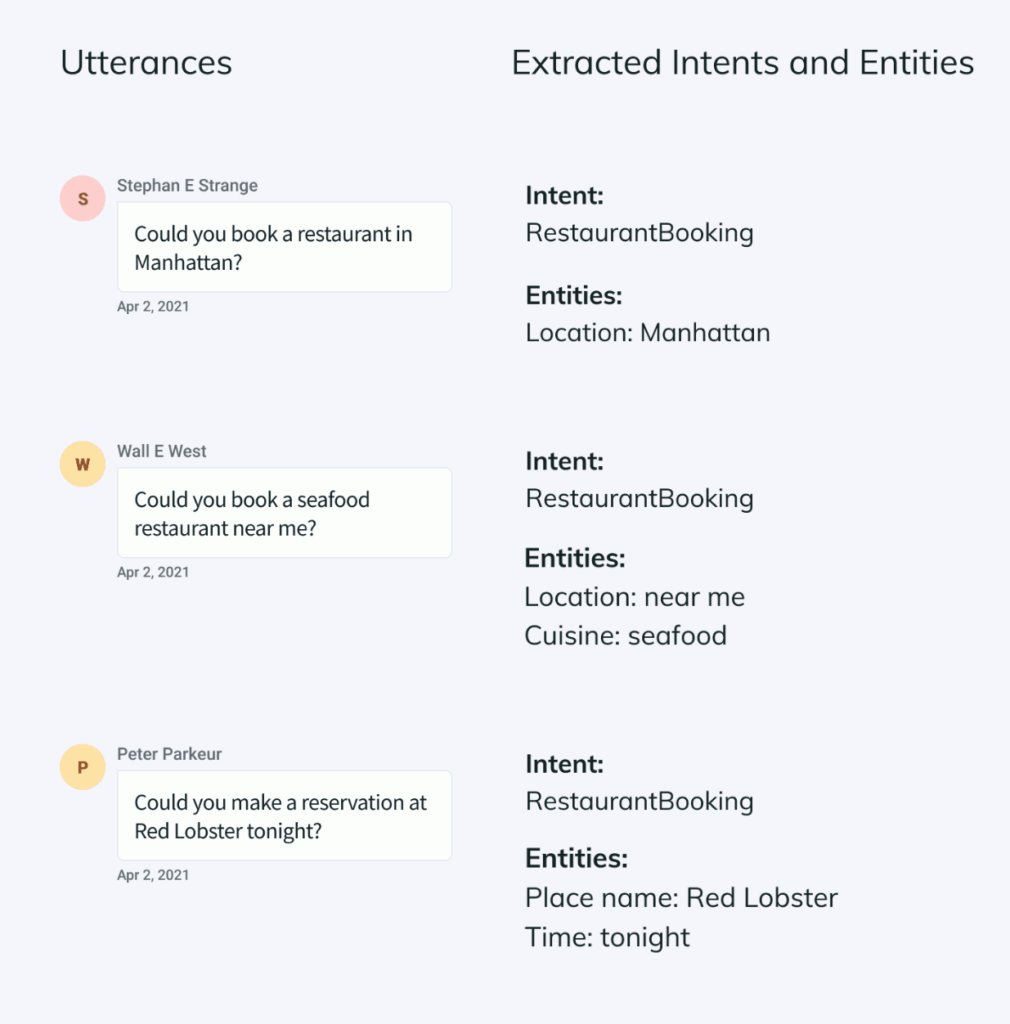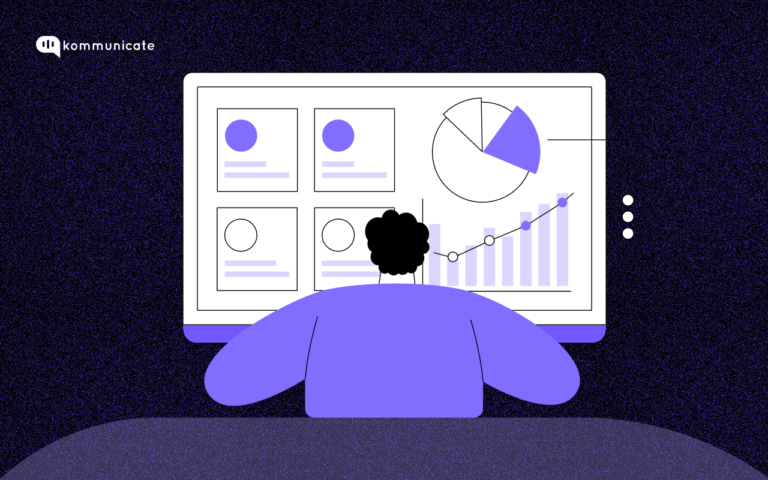Updated on February 19, 2023
The Role of Intent and Entities in Understanding Context in Natural Language Processing Systems
Intents and entities are the building blocks of natural language understanding by context. The more entities an intent can identify, the more robust it is. To better understand what is happening in a sentence, we need to know all the intents and their corresponding entities. And, the science that helps in extracting this relevant information is known as NLP (Natural language processing) – the foundation on which smart chatbots are built.
Infographic on Intents and entities in NLP Chatbot:

Before we get into the difference between intents and entities, let us first understand what Natural Language Processing is.
Natural Language Processing (NLP)
Natural Language Processing or NLP as it is popularly called, refers to the branch of artificial intelligence or AI which deals with the ability of computers to understand the text and spoken words in much the same way human beings can. In the context of bots, it helps in assessing the intent of the input from the users and then creates responses based on a contextual analysis similar to the way humans would have done.
For example, a customer on an eCommerce site types in “ Looking for 128 GB RAM android smartphone.” Since the bot is trained and recognizes the terms from its product database, it brings back a list with all the smartphones meeting these criteria from its database.
In the example above, the behaviour exhibited by the bot is quite similar to how a human operator would have handled the query. This can be achieved by training the chatbots rigorously. Developers can train the bot on multiple interactions and conversations it will go through as well as providing multiple examples of content it will come in contact with as that will make the bot better in assessing and interpreting queries more effectively. While training the bots can be a strenuous and lengthy exercise, but in the end, it is worth the effort.
Bonus: To Know more about NLP Chatbot
Intent and Entities
Though Intent and entities in chatbots are both essential to delivering what the customers want and needs, there is a slight difference between the two. While intent refers to the goal the customer has in mind when typing in a question or comment, entity refers to the modifier – fields, data, or text, the customer uses to describe their requirement while the intent is what they really mean. Let’s understand this through an example.
For instance, a customer on an eCommerce site that specializes in women’s clothing and accessories might type in “ Do you have Wedge Sandals? The bot, understanding the text, brings backs a link with 4 wedge sandals. In this example, Wedge is the “entity” here which is specifying what kind of sandals the customer is referring to.
However, there could also be another scenario where the customer would have misspelt the sandal name – “ Looking for Wadga sandals” or, could have written, “ Do you have sandals where the sole is in the form of the wedge?” This is what we call an “intent”- the customer wants to land on the “entity” -Wedge even though she has written something else.
Types of Intent
The intents can primarily have two categories –
- Casual Intent
- Business Intent
Casual intents or Small Talk intents refer to the conversation openers or closers such as Hi! hello, good morning, good evening, thanks, bye etc. These intents usually trigger the bot to respond with statements like, “Hi! How can I help you? Or, “It was great talking to you” or “Good Bye”, “Thank you for getting in touch with us”. Training bots in understanding these small talk intents helps companies handle all such small talk messages rather than just taking the context out of the conversation.
Business Intents on the other hand are the intents that are directed to the actual business of the bot. For example, if it’s a movie bot then a message from the customer such as “When is Avengers: Endgame releasing? Is a business intent as the customer wants to know the release date of Avengers: Endgame and the bot should be able to quickly get this information from the database from the backend with the help of clearly defined labels.
Type of Entities
Whenever a user is thinking about designing their intents, it is important that the entities must also be identified and labelled accordingly. In entities, there could be general entities labelled for use throughout the intents like metrics including name, quantity, count, volume, dates etc. and, some entities may be labelled as composite entities that are having more than one entity inside them.
Bonus: Learn More Chatbot Vocabulary
Here’s a quick video:
At Kommunicate, we are envisioning a world-beating customer support solution to empower the new era of customer support. We would love to have you onboard to have a first-hand experience of Kommunicate. You can signup here and start delighting your customers right away.






